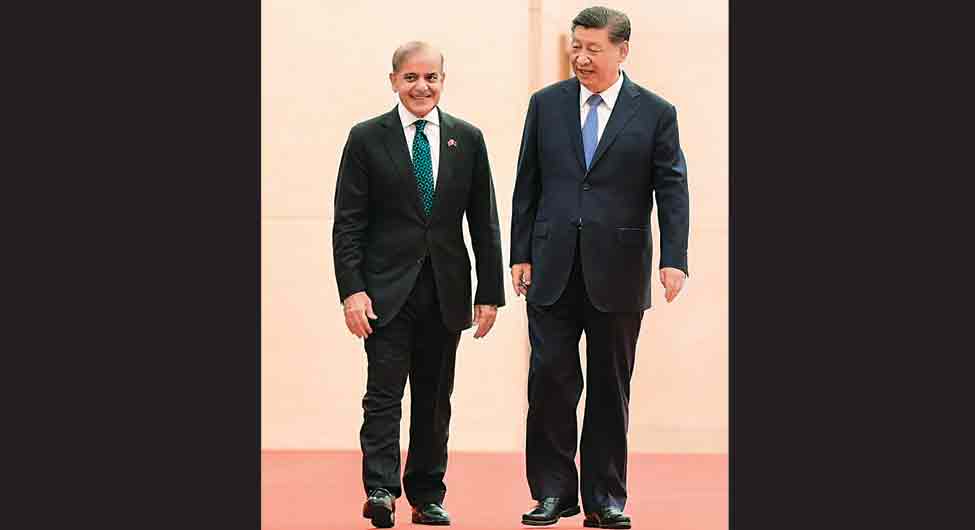Recently, India-Pakistan had reached a dangerous extent in small struggle, a few days later, former Army Chief General Manoj Narwane spoke of a big market, which went viral. He said, “War is not a romantic view, it is not a Bollywood film. This is a very serious matter. ”They were referring to the national frenzy woven over military conflict, especially online and served on several mainstream television news channels. He was handing over the government and the armed forces to ‘completely’ jump into the war and ‘end Pakistan forever’. This war was extremely scary for the people of Kashmir, which is trapped in the midst of this war, who are once again cursed to lose their delicate peace and signs of prosperity.
The announcement of a ceasefire within four days of India’s decision to carry out accurate deadly attacks on nine terrorist camps within Pakistan was disappointed and surprised. Amidst this ridiculous frenzy, a balanced and peace advocate was seen campaigning against “warfare” and calling the government “reducing stress”. In recent years, the highly polarized world and collapse geophysics were being called “changing world system” since Kovid-19, which has also been called “new international system” in 2025. In such a situation, India’s new national consciousness is in the demand for the hour.
Challenge on two fronts
The war is the reality, whose chances are always going to remain. Our multicolored diverse population and federal-Lokritic system are wrapped and spread in many layers, so the entire country awakens the enthusiasm of an attitude, a feeling or patriotism. During the 1999 Kargil conflict, long before the social media views, middle -aged people have seen the country giving a befitting reply to Pakistan’s infiltration. In 1999, at the time of the 2008 Mumbai attacks, the country has witnessed confidence, while our governments extended a friend’s hand.
Clash in Dokalam
Then in 2014 too, the newly elected Prime Minister Narendra Modi had sent a friend’s hand by sending a call to Pakistan Prime Minister Nawaz Sharif in his swearing-in. In 2015, Modi also visited Lahore. In 2016, Pakistan -backed terrorist groups attacked an army camp in Uri, Kashmir, killing 19 Indian soldiers. On the other hand, in 2017, Operation Junipar clashes with China (in Doklam, Bhutan) and then in 2020, there is a big clash in the Galwan Valley. In this way, India is getting a challenge on two fronts.
As Congress MP Shashi Tharoor recently said in an interview, “India is the status quo country and its emphasis is in progress of its people through development, technology and nation building. However, Pakistan is a revisionist or revisionist country and wants to create difficulty in India with its old strategy to destroy havoc by ‘thousand pieces’, which aims to capture our northern state. “In this sense, China is the largest revisionist country in the world. He is not only creating a hindrance in the monopoly of American’s undisputed global superpower, but also wants to become the only major power in Asia and confront the neighboring India. Experts in strategic affairs have long identified it as India’s two-mortgage security challenge. This is a big challenge for the Alambardars of security and foreign policy in New Delhi.
Old stains, new war theory
Experts in strategic affairs believe that India should be prepared to negotiate with Pakistan (and China), as the turmoil continues globally. Unlike the blind nationalists who desire Pakistan to erase the map, these experts are of the opinion that if Pakistan comes stability and prosperity, its nefarious plans will decrease and expansionist will get rid of greed and insecurity and this will get rid of it and this is in favor of India.
However, in April 2025, a spicy anti-Hindu/pro-Muslim speech by Pakistani Army Chief General Asim Munir came, which targeted India’s democratic and pluralistic views. He was trying to create discord in delicate Hindu-Muslim relations only in India, but was trying to divert attention from displeasure in his country. A few days later, the terrorist faction The Resistance Front (TRF) in Pahalgam killed 26 tourists, including a Nepali citizen. TRF is considered a branch of Pakistan-based terrorist faction Lashkar-e-Taiba.
Of course, India could not ignore it. So, the first was responded with diplomatic measures such as ‘postponing’ the Indus Water Treaty. Then, military action was taken under Operation Sindoor and in which nine terrorist bases were targeted. Later, accurate attacks were also carried out to damage 11 Pakistani military bases. Its message was clear. Through this, a message was sent to its powerful eastern neighboring China, providing high -class weapons to Pakistan and causing tension in Ladakh.
Drone attack in Sopore
In this mission, India should create a strong perception towards national security by taking all its 1.4 billion people. Political ideology, religious beliefs and socio-economic differences have to be distinguished. The Russian political theorist, Leon Trotsky’s expression of “You may not take interest in war, but the war keeps you interesting in you,” had never proved to be so right in the Indian context.
Initial signs indicate increasing awareness about this need. The parliamentary opposition of the country helped the central government take a firm stand against the insignificant ‘trade deal’ during the intervention of the US President and the Operation Sindoor. The government decided to send a “all -party” delegation to convey its point to 33 countries of the world, which included a Member of Parliament and the prestigious former diplomat. The delegation took India’s strategic message against terrorism, reiterating its long -term commitment to regional stability.
So, India is facing the insolent country on one side, Pakistan, on the other hand there is a contest with China showing its bullying. For this, we should be ready for fighting with long preparations.
(The author currently works on digital technology, global affairs and democratic systems. Thoughts are private)
